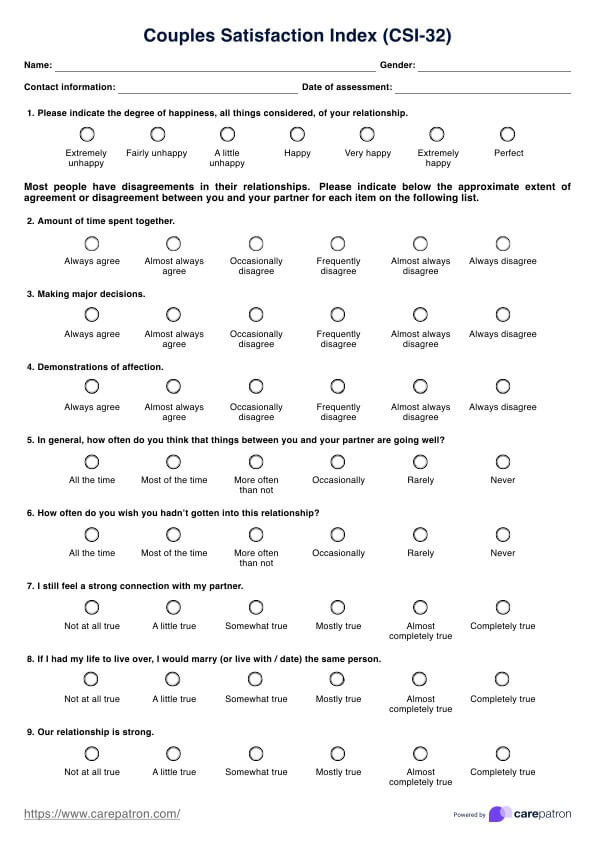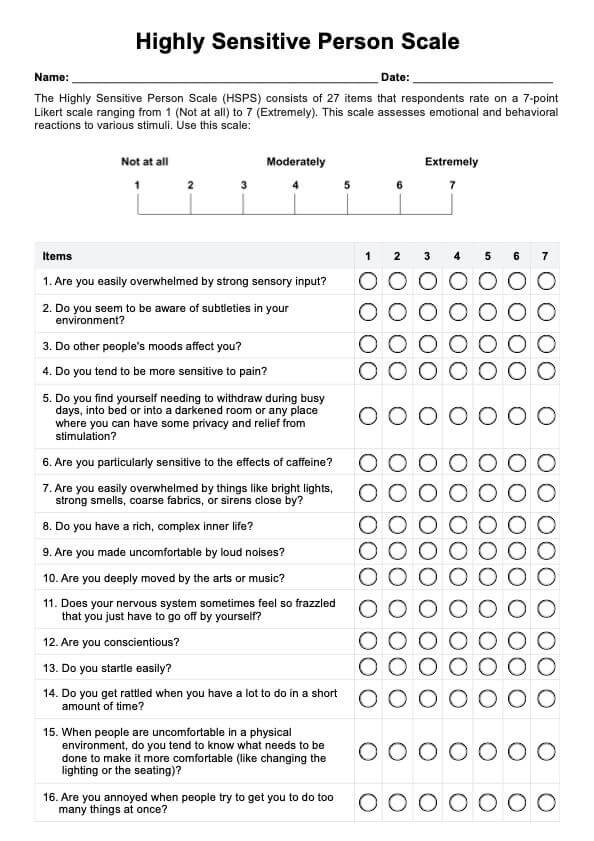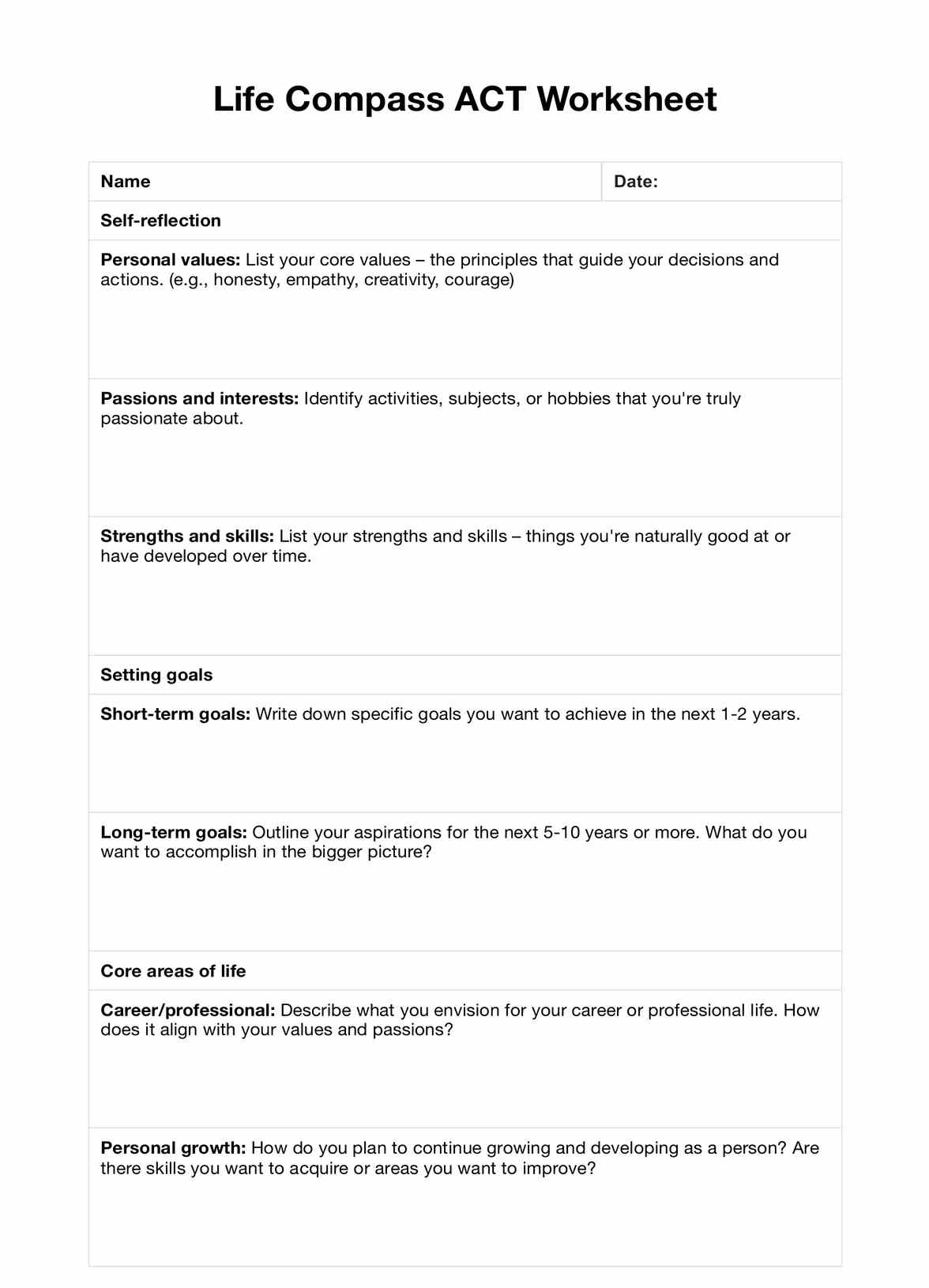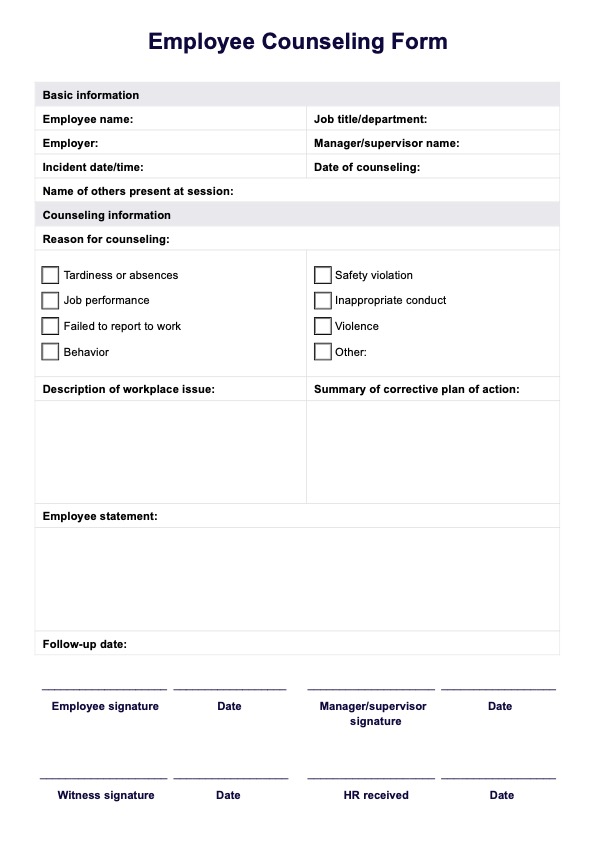Thalassophobia Test
Learn what thalassophobia is. Use our free Thalassophobia Test PDF to help assess your patient's symptoms.


What is thalassophobia?
Thalassophobia is an intense, irrational fear of the ocean or any deep body of water. It is classified as a specific phobia in the Diagnostic and Statistical Manual of Mental Disorders (DSM-5), along with other specific phobias such as acrophobia (fear of heights) or arachnophobia (fear of spiders). This fear goes beyond what would be considered a normal response to potential or actual danger. Individuals with thalassophobia often experience overwhelming anxiety at the thought or sight of the ocean, despite not being in any immediate risk. Triggers for this condition include fear of drowning, encountering sea creatures, or the unknown depths of deep bodies of water. A traumatic event, such as a near-drowning experience, can also contribute to the onset of this phobia.
The physical symptoms of thalassophobia can include increased heart rate, sweating, trembling, nausea, and shortness of breath. As anxiety begins, it may escalate into severe emotional symptoms, such as dizziness or chest tightness, potentially culminating in a panic attack. These symptoms make it difficult for individuals to enjoy activities involving water, such as swimming or boating, leading to avoidance behaviors. Over time, this avoidance can interfere with daily functioning and social interactions, contributing to the development of other mental disorders, such as generalized anxiety or panic disorders.
Thalassophobia can significantly impact a person’s quality of life if left unmanaged. Since it is part of a broader category of anxiety disorders, addressing it early through structured assessments and interventions is crucial. Tests like the Thalassophobia Test help individuals and mental health professionals evaluate the severity of the phobia, providing a starting point for treatment.
What is a Thalassophobia Test?
The Thalassophobia Test is a simple questionnaire designed to help individuals assess their level of fear or anxiety related to the ocean. It is a self-assessment tool that can be used to identify the presence and severity of thalassophobia. This test can be used by anyone who suspects they may have a fear of the ocean, as well as mental health professionals who are treating patients with this phobia.
It is important to note that thalassophobia can be a debilitating condition that may interfere with an individual's enjoyment of certain activities. It can cause significant distress and lead to social isolation or avoidance behaviors. Seeking professional help can be essential in managing thalassophobia, and the Thalassophobia Test can be a valuable tool in identifying the presence and severity of this phobia. With early intervention, such as this thalassophobia test, and appropriate treatment, individuals with thalassophobia can learn to manage their fears and lead fulfilling lives.
Thalassophobia Test Template
Thalassophobia Test Example
How to use our Thalassophobia Test
Our Thalassophobia Test template serves as a self-report tool designed to assess the severity of fear associated with deep bodies of water. It provides empty fields to record responses and includes step-by-step instructions, making it straightforward for healthcare professionals and patients alike. Below are the steps for effectively using the template.
Step 1: Access the template
Access the Thalassophobia Test by clicking the “Use template” button. This will allow healthcare professionals to customize, fill out, and print the template. Alternatively, the “Download” button provides a fillable and printable PDF for those who prefer a non-customizable option.
Step 2: Provide the test to the patient
Introduce the test to the patient, explaining its purpose and how it will help assess their fear of the ocean. The template can be administered as part of a structured interview or survey, or it can be given to the patient to answer independently at their convenience.
Step 3: Review and discuss the results
Once the patient completes the test, review the responses together. Discuss the total score and interpret it using the scoring guide provided. This conversation provides an opportunity to help the patient understand their emotions better and opens the door for further exploration if necessary.
Step 4: Plan next steps based on the results
Based on the results, offer guidance on what steps to take. For patients showing moderate to extreme fear, suggest appropriate follow-ups, such as therapy or relaxation techniques. If the patient filled out the test independently, you could offer them the option to schedule another appointment to discuss their responses in detail.
Scoring
The scores from the Thalassophobia Test are interpreted based on the total score an individual receives after answering all the questions. The scoring system is designed to indicate the severity of thalassophobia, with higher scores indicating a more severe fear of the ocean.
- A score of 0-10 indicates that an individual has little or no fear of the ocean. This is considered to be a mild or no thalassophobia score.
- A score of 11-20 suggests an individual has a moderate fear of the ocean. This may cause anxiety or avoidance behavior concerning bodies of water, but it is not severe enough to interfere significantly with daily life.
- A score of 21-30 suggests an individual has a severe fear of the ocean. This level of fear can be debilitating, causing significant anxiety and avoidance behavior related to bodies of water. It may also interfere with daily life, affecting work, relationships, and other vital areas of functioning.
- A score of 31-40 indicates an extreme fear of the ocean. This level of anxiety is typically associated with significant distress, impairment, and interference with daily life. It may require professional help, such as counseling or therapy, to manage the fear and reduce its impact on daily functioning.
It is important to note that the Thalassophobia Test is not a diagnostic tool, and a high score does not necessarily mean an individual has thalassophobia. However, it can provide a useful starting point for discussions with mental health professionals and help individuals better understand their own fears and anxieties about the ocean.
When to use this Thalassophobia Test template?
This test can be particularly helpful for individuals experiencing anxiety when near the ocean, lakes, or any deep body of water. If patients report feelings of dread, nervousness, or panic attacks when thinking about or encountering such environments, administering the test can help identify the presence and severity of their fear. The results serve as a starting point for discussions on mental health and potential interventions.
Mental health professionals may also use this template as part of an initial assessment to gauge specific phobias and identify patients in need of further treatment. Regular use of the test allows practitioners to monitor the effectiveness of treatment strategies over time, ensuring that patients receive the right support to manage their symptoms.
Managing thalassophobia
Living with thalassophobia can be hard, but there are ways to manage it. Managing thalassophobia requires addressing both emotional and physical symptoms using structured therapeutic techniques, relaxation strategies, and support systems. Below are some effective approaches:
- Exposure therapy: One of the most effective treatments for specific phobias, including thalassophobia, is exposure therapy. It involves gradual exposure to feared stimuli, such as starting with images of the ocean before progressing to real-life encounters.
- Virtual reality exposure: When real-world exposure feels overwhelming, virtual reality exposure can create a controlled environment where individuals safely confront their fear of the deep sea or other deep bodies of water.
- Relaxation techniques: Practicing relaxation techniques, such as deep breathing, meditation, and mindfulness, helps manage panic attacks and emotional symptoms. These techniques reduce anxiety, particularly when it begins to rise near water.
- Support and treatment facilities: Seeking help through support groups or a mental health professional offers a vital foundation for recovery. These facilities provide individuals with customized care plans for managing their anxiety disorders and preventing severe panic episodes.
Commonly asked questions
Deep water, such as the deep ocean, evokes fear due to its vast, unknown nature, which can trigger anxiety about unseen dangers like sea creatures or drowning. The lack of visibility, depth, and unpredictability of the environment increases discomfort, making it intimidating for many individuals.
Triggers for thalassophobia include exposure to the deep sea or other deep bodies of water, such as lakes or oceans. Media portrayals of sea monsters, traumatic experiences involving water, or hearing stories about accidents at sea can also induce or worsen the fear.
Thalassophobia is often rooted in an intense fear of drowning, being attacked by marine life, or losing control in vast waters. Past traumatic events, such as near-drowning incidents or overwhelming feelings of helplessness in water-related situations, may contribute to the development of this phobia.


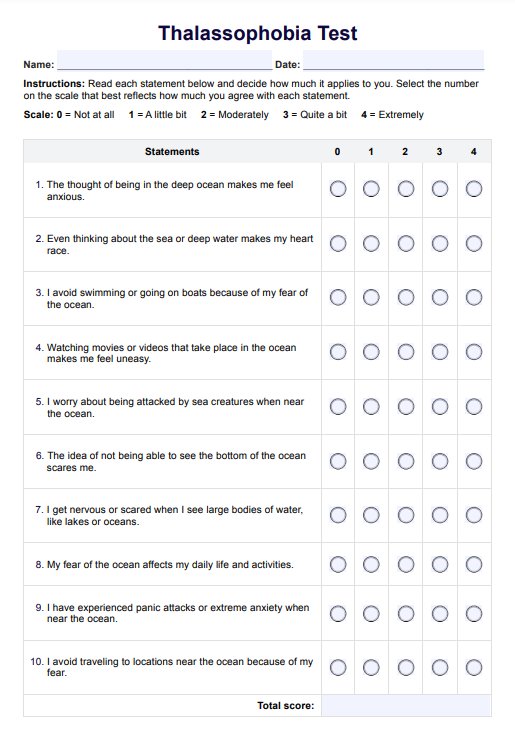
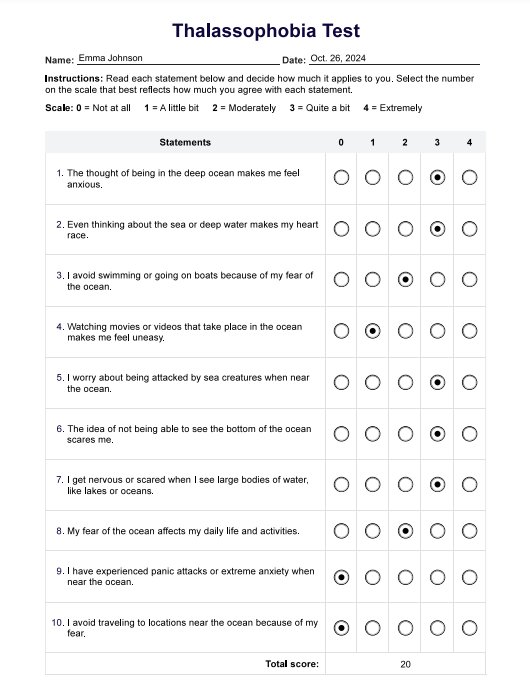


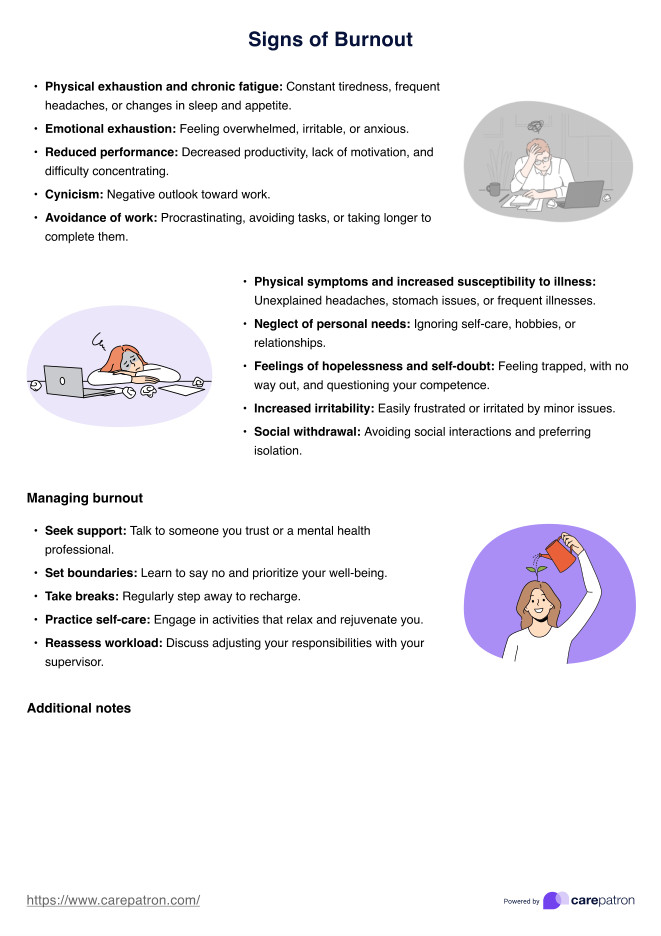
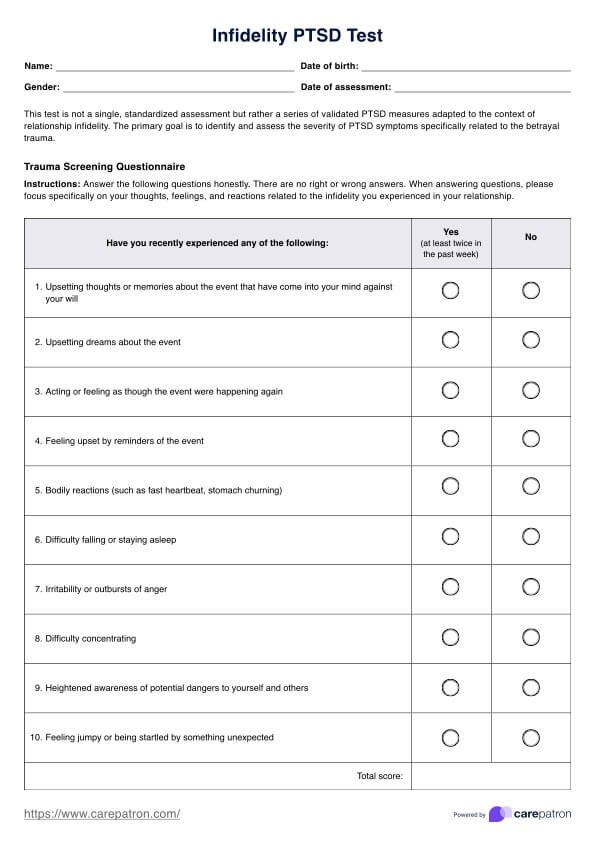









-template.jpg)










































































